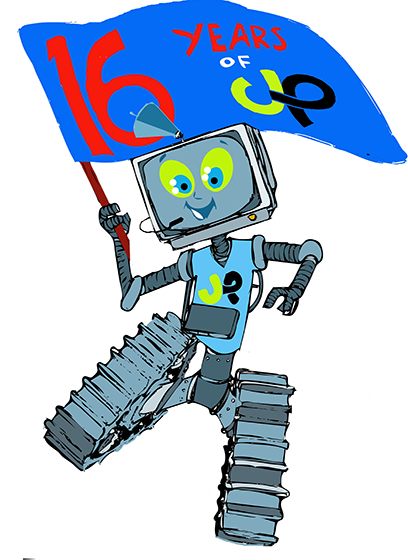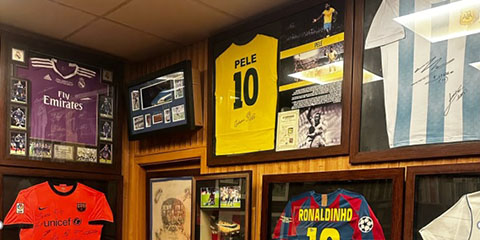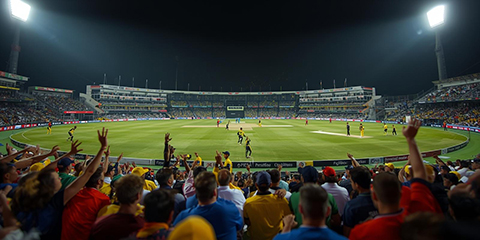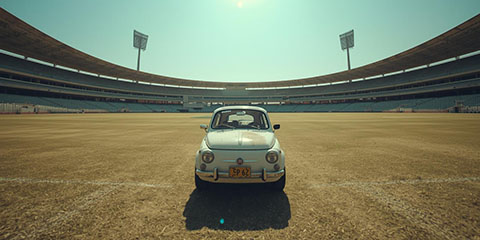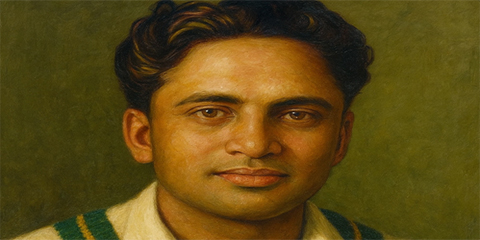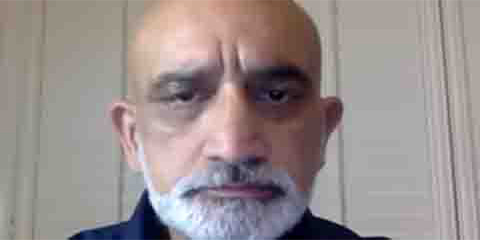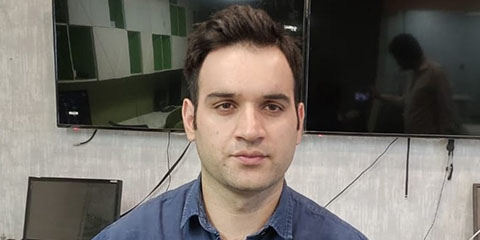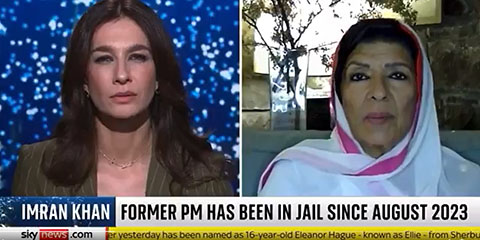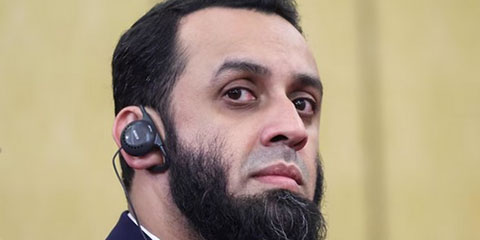The vanishing champion: Pakistan's greatest tennis legend who chose to disappear
JournalismPakistan.com | Published 4 months ago | Dr. Nauman Niaz (TI)
Join our WhatsApp channel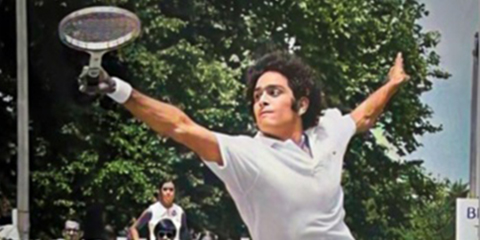
ISLAMABAD—Some names are etched in gold, some in stone, and some in illusions. Haroon Rahim's is the latter, not forgotten, not quite remembered, but suspended in time like the hush between the toss of a ball and the first strike of a racket. He was Pakistan's best-kept secret, a man who could've walked into the echelons of tennis greats, but instead chose or was forced to walk away.
The Prodigy from Lahore
A sporting prodigy whose name belongs in the same breath as the best, yet floats in the margins of memory, half-faded and haunting. The story of Haroon Rahim is not one of triumph or tragedy. It is a fable of escape, from fame, from legacy, from a country that couldn't understand him, and from a sport that could never own him.
In a country where tennis courts were fewer than political promises, and the national conversation was monopolised by the thunder of fast bowlers and the elegance of leg-spinners, Haroon Rahim arrived not with noise but with stillness, the kind of tranquility that only prodigies carry.
Born in Lahore in 1949, into a family of intellectuals and sportsmen, his brother, Zulfiqar Rahim, a Davis Cup captain, Haroon was a different sort. There was always an untamed beauty about the way he moved on court: a fluidity that couldn't be taught, a rebellion that couldn't be schooled.
The Youngest Davis Cup Player
By the age of 15, he was the youngest ever to play for Pakistan in the Davis Cup. He would go on to represent the country in 16 ties, often as its lone warrior, carrying the burden of an entire nation's ignorance towards tennis on his slender shoulders. At 16, he was already leaving trails of awe across Europe and the US. He was not just talented. He was touched. And in America, they saw what Pakistan couldn't.
There's something lyrical and evocative, if not entirely cruel, about the fact that Haroon played alongside Arthur Ashe at UCLA. Ashe, the conscience of tennis. Haroon, its ghost. Under Arthur Ashe's influence, and with the legendary Glenn Bassett coaching him, Rahim carved a collegiate career that bordered on the sublime. Twice an All-American. One of UCLA's finest. He was that rarest of hybrids, an artist with a killer instinct, a stylist who never wasted a movement.
The Professional Years
He turned professional in the 1970s, entering the golden age of tennis when Jimmy Connors was snarling, Bjorn Borg was stoic, and Johnny McEnroe was about to rage. Haroon didn't rage. He glided. He moved across the court like wind over silk. In a world of primal screams and baseline brawls, he remained understated, sometimes to a fault. Yet, he beat some of the best, Ilie Năstase, Tom Okker, Jan Kodeš. He won five doubles titles and two singles titles on the professional circuit. And most memorably, in 1976, at the Little Rock Open, he lifted the trophy, the only Pakistani ever to win an ATP singles title. But by then, the whispers had started. That he was aloof. That he was difficult. That he didn't care enough. What they meant was: he didn't play the game outside the lines.
A Tennis Dynasty
In the beginning, there was the boy. And there was the racket. And there was Lahore, fragrant with camphor and melancholy, where the trees at Mayo Gardens stood tall like they had watched centuries of men chase dreams that ended with silence. Fifteen, and already draped in green. Haroon Rahim, the youngest ever to play Davis Cup for Pakistan, stepping onto the court as if destiny had quietly parted the crowd to make way for someone it would never understand again. He didn't walk onto tennis courts; he entered them the way poets enter libraries with reverence, not bravado. And by the time the world noticed, the boy from Punjab born into a household where tennis was not a hobby but heritage had already taken flight.
The Rahims of Lahore were a tennis family. His father, Mir Abdur Rahim, was not just a civil servant; he was the spiritual groundskeeper of their shared obsession. A man who told his children, sons and daughters alike, to hold rackets as one would hold beliefs, tightly, with faith. He loved tennis with a devotion so pure, it was only fitting that he died playing doubles, on a warm Lahore day in 1968, heart stilled mid-point at the picturesque courts of Mayo Gardens. A tennis death. A beautiful one. A Rahim's death. Four of Haroon's siblings wore the badge of national champions: Nasim, Naeem, Zulfiqar, and Shahnaz, but Haroon? Haroon was not just the best of them. He was the echo of something larger. Something divine.
Early Triumphs
It began, as all myths do, in England, Easter of 1965, Huddersfield Open. He won. Not because he was expected to, but because expectation is irrelevant when divinity plays tennis. Twice a Wimbledon Junior quarterfinalist, 1965 and again in 1967, twice flirting with that sacred green turf as though it were a lover he couldn't quite keep. He would go on to play the main draw, one of only two Pakistanis ever to do so after Khawaja Saeed Hai, an unclaimed inheritance in the house of British sport, a brown boy with soft wrists and sharper instincts, writing couplets in volleys.
The UCLA Years
By 1970, UCLA had become home. Not a university, a cathedral of tennis where Haroon led the charge with Jeff Borowiak and a young, fire-eyed Jimmy Connors. In 1971, he and Borowiak won the NCAA doubles title, two poets, one ball, eternal rhythm. He won the Ojai Championships. The Cranleigh Open. The Northumberland Championships. Not in a season, not over years, in 1969.
Because for Haroon, time didn't pass. It yielded. In 1970, he won the U.S. National Amateur Grass Court Championships. Then defeated Jimmy Connors at the March of Dimes Open — a match that now lives only in dust, in retellings, in the soft catch of breath when an old man says, 'You know, once, Haroon beat Jimmy.' In 1971, he took Palm Springs. By 1976, he did what no Pakistani has done before or since: won an ATP title in Little Rock, Arkansas, against Alex Metreveli, a Wimbledon finalist, a name with weight. And then won again in Cleveland against Colin Dibley. Two ATP titles. Not just stats. Scripture. Etched on a racquet that now lies forgotten.
Career Highlights
He took Manuel Orantes, Grand Slam champion, to a final. Lost, but beautifully — the way only Haroon could lose. Because even his defeats felt deliberate, as if choreographed to remind us that not all beauty wears medals. Three doubles titles — Oslo in 1974, North Conway in 1975, and Little Rock in 1978. He reached the quarterfinals of the US Open in doubles. Made it to the third round at Wimbledon. Second round at Roland Garros. Each slam a different symphony. Each matches another verse. And then that one match. The one whispered through time: Tom Gorman, Pennsylvania Lawn Tennis Championships. No serve broken. Every set has a tie-break. Each point is a coin toss between gods; 6–7, 7–6, 7–6, Haroon winning by a single point. A match not played, but dreamt.
The Great Disappearance
Then came Surrey, 1978. The clay. The end. His final tour event. Age 29. Still young. Still whole. But no goodbye. No farewell. No ceremony. He was last known to be somewhere in America. Still alive. Still distant. Still silent. He severed all contact, family, friends, federation. Cut the strings, packed away the racket, and walked out of the spotlight as if it never belonged to him.
He left the game like one leaves a lover they can't stop loving, quietly, reluctantly, completely. And Pakistan? Pakistan watched cricket. The federation, blind and blundering forgot him. No court bears his name. No juniors wear his shadow. The silence was mutual. And deafening.
What do you call a man who was all things and nothing? Who touched the sky, then chose not to live under it? Not a tragedy. Not a tale. But an elegy. Haroon Rahim, Pakistan's missing stanza. A sonnet half-finished. The man who disappeared with the sun. Then he was gone. No farewell, no ceremony, no final rally. He vanished. One day he was ranked in the top 50, the next day, a ghost.
The Unfound Legend
Pakistan didn't notice. The world barely asked. And Haroon, it seemed, was content with this vanishing act. He slipped into anonymity somewhere in the United States, away from the shadows of palm trees in Karachi or the smoggy nostalgia of Davis Cup ties in Lahore. He didn't want to be found. And for decades, he wasn't. Rumours filled the vacuum of spiritual quests, of reclusive silence, of a man who refused to be boxed. Tennis was never enough for him, they said. But perhaps no arena ever is for a soul that seeks meaning beyond the white chalk lines.
What do you do with a legend who doesn't want to be one? Pakistan never celebrated him. The Pakistan Tennis Federation, as always, remained a monument to bureaucracy, incapable of honouring the poetic souls who didn't toe the line. Haroon Rahim, the greatest player Pakistan ever produced, never coached here, never built academies, never cut ribbons.
The Living Mystery
Because he wasn't just disillusioned with tennis. He was disillusioned with us. Yet, in his absence, his legend grows — like vines in abandoned ruins. For a generation of tennis players in Pakistan, he remains a myth: the boy who once beat the world, then disappeared into it. For the romantics, he is our Syd Barrett, our Rimbaud, the genius who walked away before the world could reduce him to a number, a record, a cliché.
If you walk past a tennis court at twilight and see a figure moving gracefully in the fading light, you might think of Haroon. He's not in our Hall of Fame. He never got a Sitara-e-Imtiaz. No stadium bears his name. But he remains, untouched, undistorted by time. The vanishing point of a racket's arc. The echo of a life that could not be owned. Pakistan's tennis greatest enigma. And maybe that's exactly how Haroon Rahim wanted it.
'Some men leave monuments. Others leave mysteries. Haroon Rahim left both in reverse.'
Dr. Nauman Niaz is a civil award winner (Tamagha-i-Imtiaz) in Sports Broadcasting & Journalism, a regular cricket correspondent having covered 54 tours and three ICC World Cups, and having written over 3500 articles. He has authored 15 books and is the official historian of Pakistan Cricket (Fluctuating Fortunes IV Volumes - 2005). His signature show, Game On Hai, has been the highest on ratings and acclaim.

